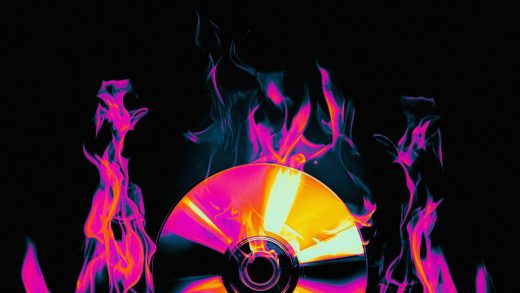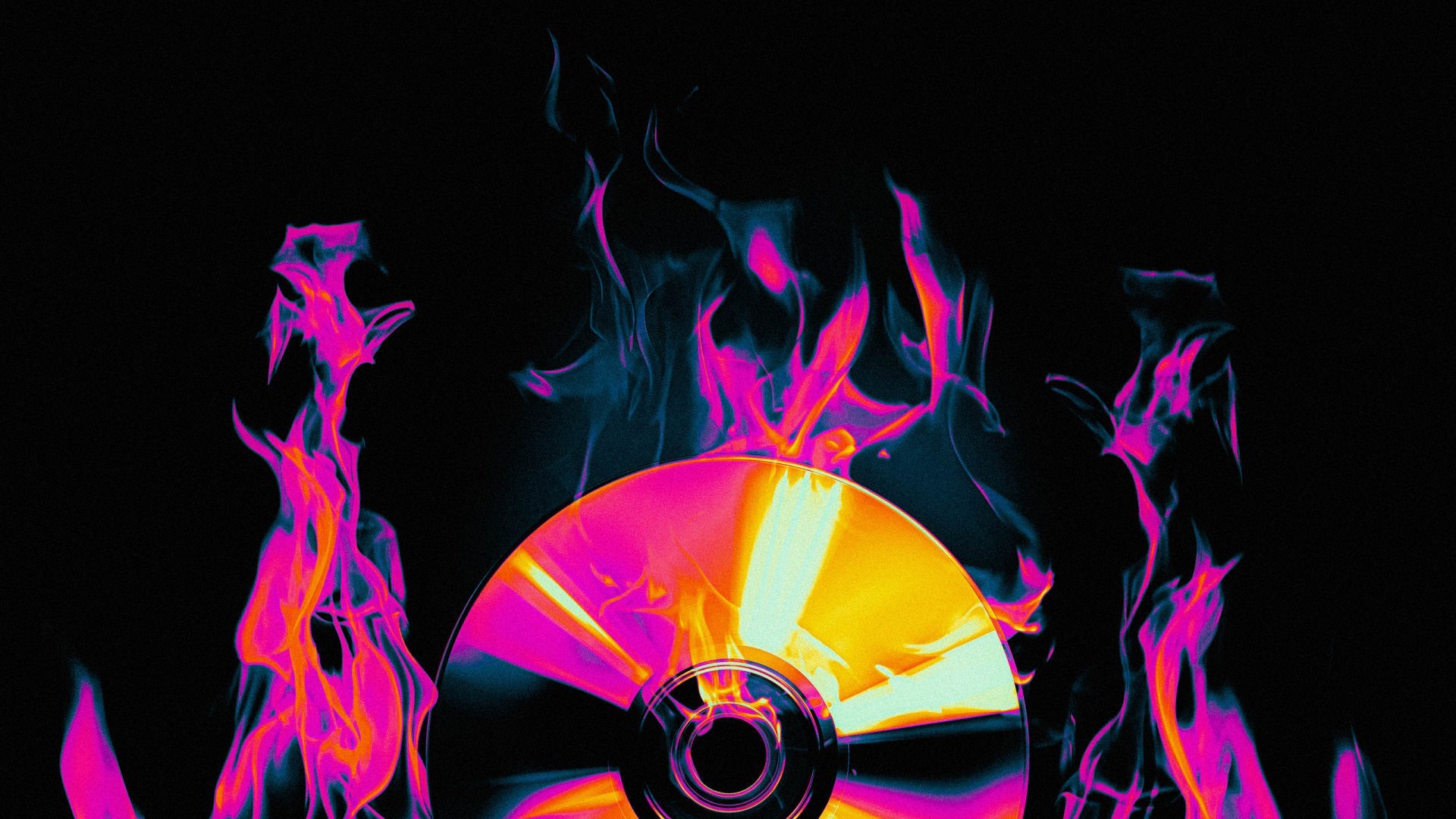How music lost its value
How music lost its value
A new documentary from Eminem explores how the internet changed music forever. And diving into a vintage collection of CDs reveals just how much we lost in the process.
A new documentary from Paramount+, How Music Got Free, tells the inside story of how albums shed their exoskeletons and became something more ethereal and less profitable. Produced by LeBron James and Eminem, who rode the tail end of the CD boom to stratospheric heights, the film explores the music industry’s spectacular implosion about two seconds later. But while it traces the overarching business story in forensic detail, How Music Got Free doesn’t quite capture what it felt like to be a music fan living through this extraordinary moment as it unfolded.
Well before Steve Jobs promised to put a thousand songs in our pockets—and well, well before a thousand songs seemed like a relative pittance next to the infinite expanse of a Spotify account, the peak of musical mobility was a book of CDs. It was the only way to bring along a curated sample of your entire library of albums wherever you went. In the early days of the pandemic, I found an old book of CDs I’d collected during the era that How Music Got Free spans: half of them bought, half burned. Revisiting it in 2020 revealed all we’ve lost since it was my main source for music—and may explain why some older music formats are making a comeback.
An early-COVID move from Brooklyn to Minneapolis meant trading New York’s subway system and supreme walkability for a borrowed 2006 sedan and a lot of hour-long drives to visit my wife’s family in the suburbs. As we unpacked boxes from our former apartment, I dusted off an ancient booklet filled with the last vestiges of a once-glorious CD collection, which had grown smaller and smaller with every move. Since our car was nearly as old as that book, it only had a CD player in the dash and no USB port for our phones. It was a perfect opportunity to take the book out of retirement and put it back in active duty for the first time in ages.
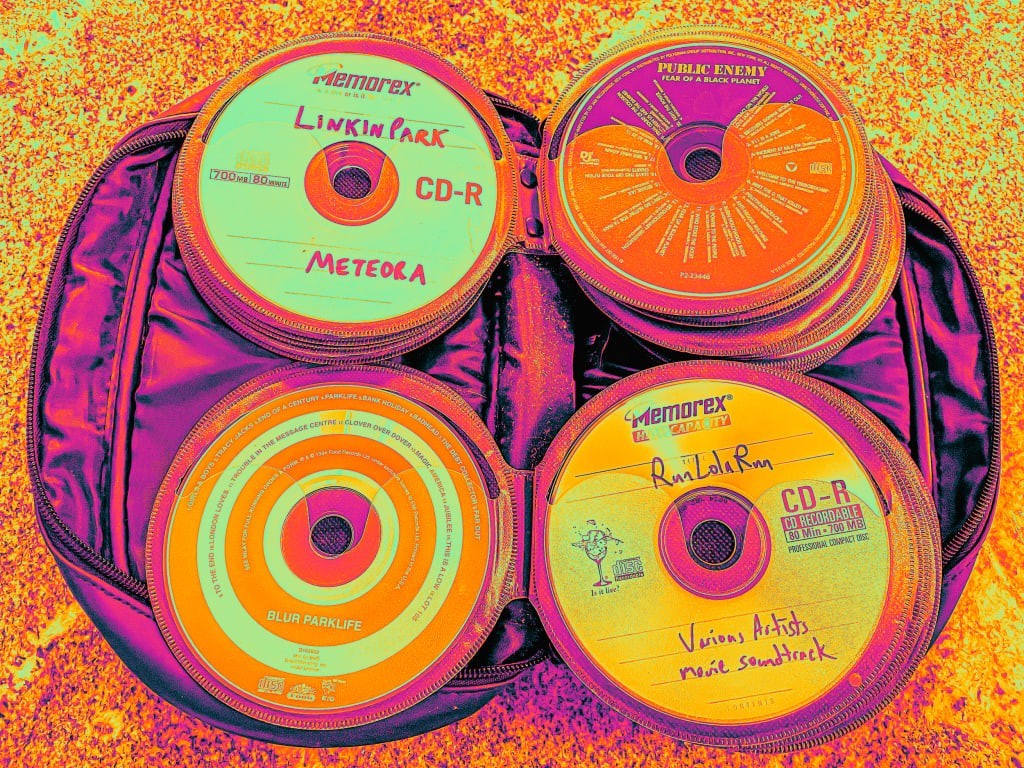
Into the time machine
Having a book of CDs in my car during the late ‘90s felt roughly the same as having a fully charged iPhone or a basket of still-warm, already-folded laundry: like being whole. No need to depend on the radio with its low hit-rate grab bag of songs played in between commercials. You could instead just improvise your own eclectic soundtrack from moment to moment. The only major downside to ferrying around one’s music collection this way—apart from the ease with which a sticky-fingered intruder could steal it—was that, stripped of album art and packaging, CDs felt kind of anonymous. Instead of rummaging through stacks of jewel cases housing impeccably composed cover images, each promising a specific feeling, you selected from a Cheesecake Factory menu of nearly identical CD faces. If your bond with an album wasn’t already sealed, seeing it as just another CD in a book, like a turtle unshelled, was uninspiring.
Little did I know back in 1999 what was coming next. Every aspect of how we related to new music was about to transform. Not only were millions of avid fans standing on the precipice of no longer paying for albums, they were also about to stop valuing them as well.
Poring through options in the four-per-page CD book, I found albums straddling both sides of the MP3 revolution. Jay-Z and Oasis LPs I’d bought at music stores. Jane’s Addiction and Ol’ Dirty Bastard albums I’d ordered from Columbia House music club, whose eight-CDs-for-a-penny promise was so ludicrously cheap, despite the catch on the back end, that it felt like getting away with something. There were albums by the Roots, Stone Temple Pilots, and someone named DJ Clueless, all purchased from unremembered places—along with page after page of recordable CDs whose artists and titles I’d long ago scribbled in with black felt-tip pen.
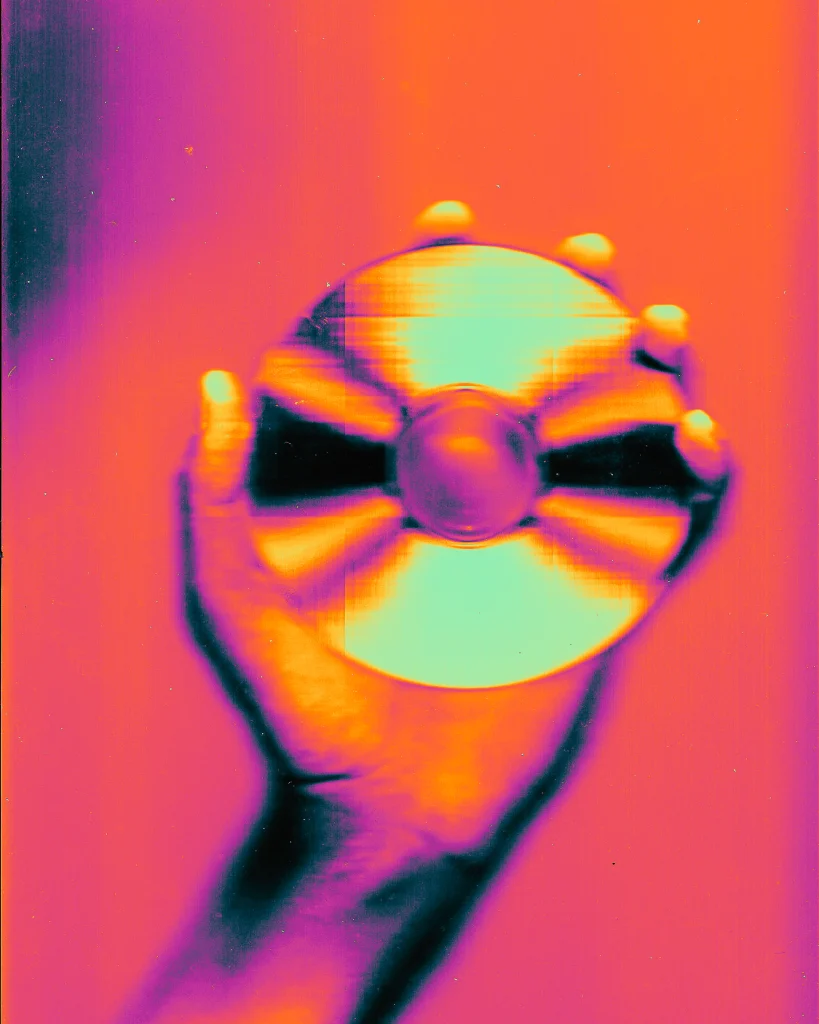
The album drop
During one of our first long drives of 2020, I fished out of the book a Jay-Z album, the final one he’d make in the 20th century. It starts with the artist, backed by an angelic chorus and heavy bass, breathlessly narrating the typical experience of a music consumer in 1999: “I know you just ripped the packaging off your CD. If you’re like me, you’re reading the credits right now.”
It was an aural artifact from the twilight of an era: the last fleeting moment when masses of music fans dutifully drove to Circuit City or Sam Goody or Tower Records on a Tuesday—not a Friday!—to pick up an album whose lead single had been blowing up on radio and MTV for months and spend a car ride gorging on newness, nourished by knowing this would be the first of many visits with the latest resident in the musical megalopolis of their CD collection.
“If you’re in your car, I don’t care if it’s winter, I want you to put all your windows down,” Jay-Z commanded from within my car and from decades earlier, when this way of listening to his album wouldn’t have been a throwback lark but the standard. “Zone out, buckle up, let’s go.”
At the time, music had only just begun to travel not by car but through the air, from computer to computer, like a virus.
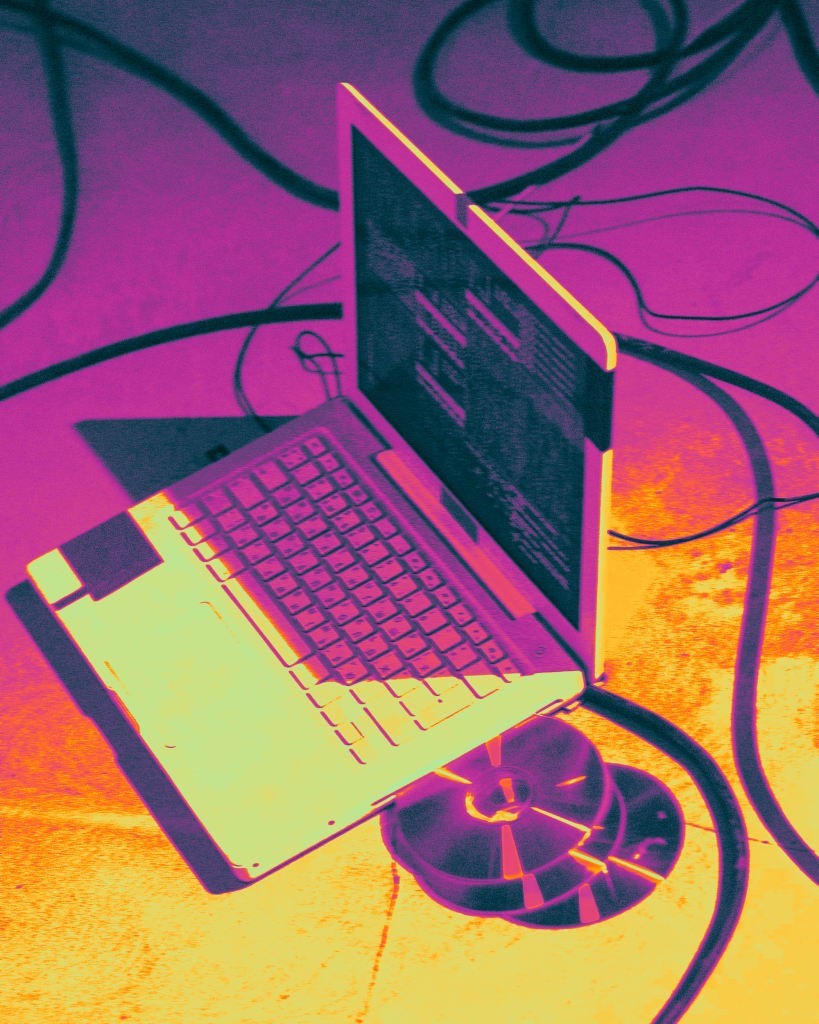
Rip and burn
The file-sharing revolution arrived in tandem with CD-burning technology’s journey to the mainstream. Early adopters had been burning CDs since the mid-‘90s, but it took a while for prices to drop enough that burners became broadly accessible. Neither the price drop, nor the arrival of pioneer peer-to-peer file-sharing-service Napster were preceded by much fanfare. Information traveled differently back then. Broad behavioral trends had to burble up for a while before mass media produced concurrent think pieces about them. These seismic shifts in music distribution only merited barrels of ink long after they’d already permanently shaken up my relationship with music.
Deep inside my old book of CDs lay the first burned one I ever acquired. A friend had copied for me the new (and ultimately final) studio album from Rage Against the Machine, 1999’s Battle of Los Angeles, in exchange for burning one of mine for himself. Listening in 2020, I felt all over again the palpable excitement of getting a brand-new album for free from a band I’d adored. It had felt like getting away with something on a deeper level than Columbia House—because it was.
That excitement had been short-lived, though. I never had the album art for Battle of Los Angeles. Not even the usual CD-face art adorning all its neighbors in the CD book. The band’s name and album title were instead scrawled in my squiggly teenage handwriting. In place of the vibe its cover was meant to conjure, I had information; instead of enjoyment, I had ingestion; in place of the connection forged by trading money for art, I had the fading flash of attainment.
Driving around listening to that album more than 20 years later, there was no rekindled connection to the songs. The only Rage Against the Machine studio album I hadn’t bought coincidentally ended up becoming the only one I never really “got into.” The anonymous aura that some of the albums I’d purchased gained upon entry into the book was priced into this one from the start—and while the price was technically nothing, it cost more than I could have imagined.
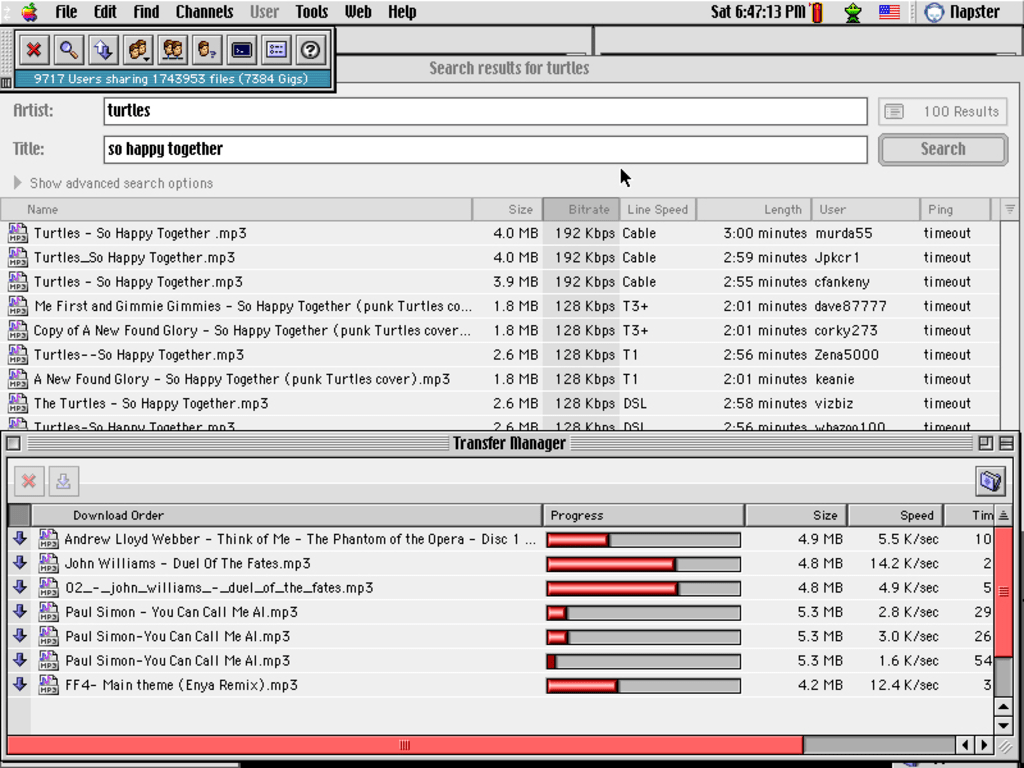
Enter Napster
What followed was way more than just the feeling of getting away with something. It was the music equivalent of ditching the straight and narrow to devote myself to a life of crime. How Music Got Free at one point plays a 1999 MTV interview with *NSYNC, where the band mentions having just learned about MP3s. I found out about them around the same time. One night, a friend strolled into the dorm room where a bunch of us were watching Who Wants to Be a Millionaire and asked whether anyone had heard of Napster. No one had. We then spent the rest of the night gathered around one of those enormous, beige-gray computer monitors, taking turns naming any song anyone could think of, and then summoning it into our presence like a seance. It was the greatest jukebox in the cosmos. The lag between selecting a song and listening to it was a little longer than usual, but who could beat the price.
At first, it was an electric thrill to burn a CD with an hour’s worth of random songs conjured from the internet. Within six months, everyone I knew had a spindle of blank recordable CDs near their computer, and burning had become a boring fact of life. Some of the albums in the book reminded me in 2020 of this feverish burning spree, mainly those from the genre then known as techno, later rechristened as EDM—Hybrid, Paul van Dyk, the Run Lola Run soundtrack. I’d wanted cool-sounding background music for nights out, and I got exactly the year-2000 version of that. Listening to some of those CDs a couple decades on, they sounded as interchangeable to 40-year-old ears as they had to those of a college junior briefly indulging every musical whim, sucking out all the marrow till I’d forgotten how to taste.
After a while, the thrill of getting away with something evaporated. Paying for music no longer seemed like a burden to opt out of and instead just felt like the right thing to do. But by the time I developed a consumer conscience and began buying albums again, the digital die had already been cast. There was no going back.
When Napster fell in 2002, it took down the recording industry’s money-printing days as well. The music world changed rapidly in its aftermath. Portable MP3 players slowly eroded the CD-burning craze, but also paved the way for the streaming era. In between were many years where it was unclear how to realistically be a responsible music fan. It was nearly impossible to just pretend the genie had disappeared back into the bottle. Buying albums on iTunes felt too ephemeral but buying them on CD felt increasingly pointless, since the content of the CDs would only end up transferred onto my iPod (and, later, my iPhone) anyway.
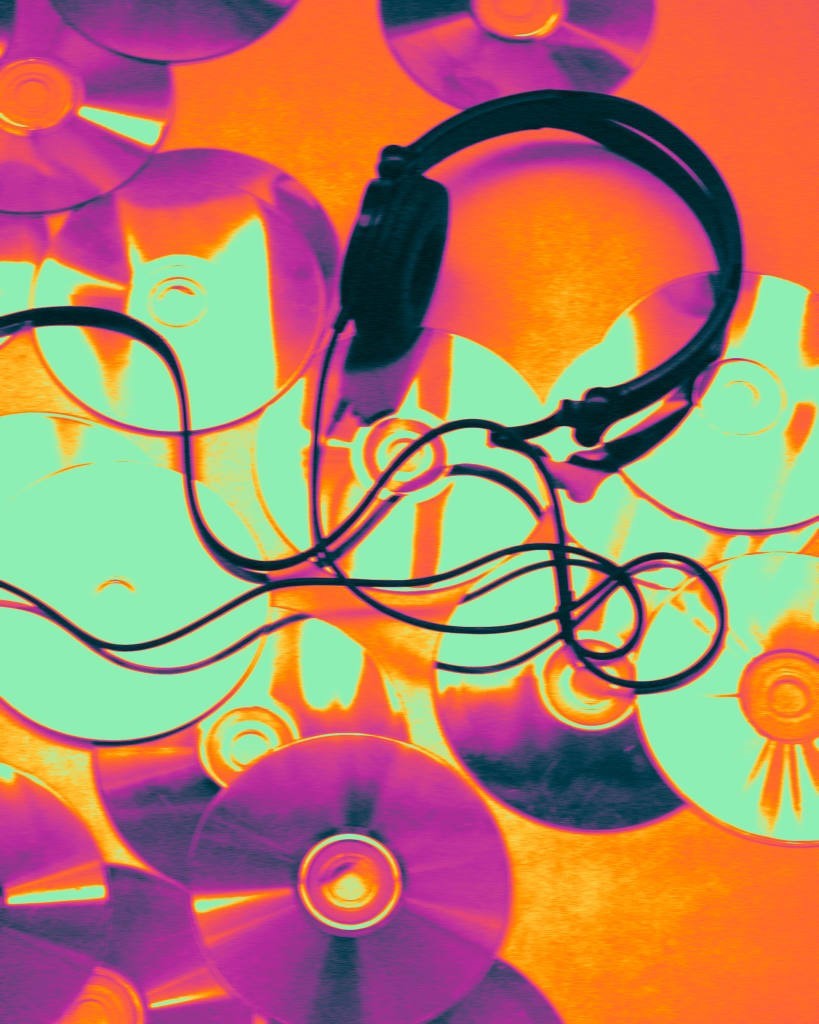
Going back to physical media
Rediscovering my book of CDs, I found a pair of albums from 2009—one by Yeah Yeah Yeahs, one by MF Doom—which I recognized as the last CDs I would ever buy. My head bobbed along as I listened to them, but I felt no more connection to them than I had to that burned Rage Against the Machine album. By 2009, the way I spent time with an album had changed. Determining whether I liked an album enough to buy it had become 75% of my interaction with it rather than listening on repeat to the point of infatuation, obsession, internalization.
My reunion with those old CDs came to an end far more quickly than the CD business’s rapid deterioration. We got sick of them after a while and bought a device that somehow connected our phones to the car’s sound system through its cigarette lighter portal. For the second time in my life, CDs became obsolete and technology marched forward.
Outside of those car rides, though, I’d already long settled into my current mode of musical consumerism: still indulging every whim at all times, for a small monthly Apple Music fee, and collecting vinyl to scratch the physical media itch. Vinyl has reignited for me a long-missing air of full engagement—and considering that the format has grown consistently in sales every year since 2006, and by 14% just last year alone, the feeling appears to be widely shared. Technology marches forward, except when it occasionally lurches backward.
The more I listen to the same albums in their entirety during dinner parties or while reading on the couch, the more they feel like part of my life’s infrastructure, rather than a light breeze blowing through it. In other words, a vinyl collection is like the exact opposite of a book of CDs—far less ephemeral, far more valuable, impossible to carry around unless you’re a DJ with a crate. There is no mobility in a vinyl collection, but there just might be some nobility.
ABOUT THE AUTHOR
(24)

